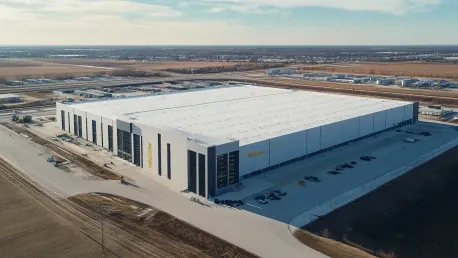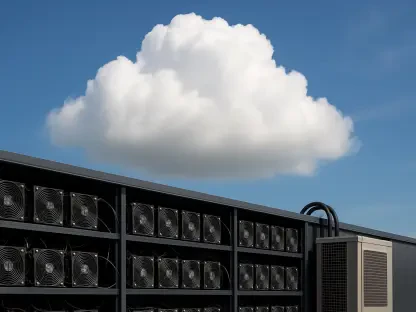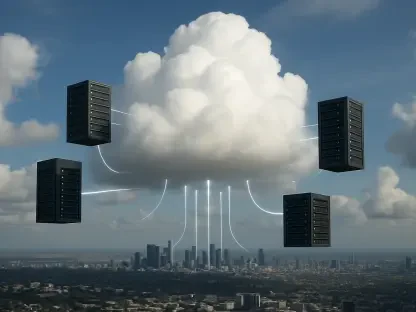The rapid and often unchecked expansion of warehouses and data centers throughout the United States has sparked a critical conversation about the underlying motivations and consequences of such development. While these structures are driven by technological and commercial feasibility, their necessity and long-term implications remain questionable. This article delves into the environmental, social, and economic impacts of this trend, urging a more thoughtful approach to infrastructural growth.
Environmental and Social Impact
Land Consumption and Ecological Consequences
The construction of massive warehouses and data centers predominantly involves low-rise, sprawling concrete buildings that require extensive tracts of land. These structures are often situated on the outskirts of metropolitan areas where land is cheaper and more abundant. However, this leads to significant consumption of farmland and natural landscapes, which could otherwise serve important ecological and agricultural functions. The loss of these lands not only disrupts local ecosystems but also diminishes the agricultural capacity of the region. The conversion of fertile farmland into industrial sites constitutes a permanent alteration that can lead to decreased biodiversity, soil erosion, and an overall reduction in the ecological health of an area.
Beyond the immediate physical footprint of these buildings, their construction often requires additional infrastructure, such as roads and utilities, further expanding the environmental impact. The deforestation and habitat destruction that accompany these developments can have long-lasting consequences for wildlife and local communities. Watersheds face increased pollution risks, and local waterways may be altered or contaminated, affecting both aquatic life and drinking water sources. The encroachment of these structures into natural areas is thus a process that extends far beyond the simple allocation of land; it represents a fundamental reshaping of the local environment with potentially irreversible consequences.
Community Resistance and Environmental Degradation
Specific cases, such as the Allentown/Bethlehem area along I-78, the backlash in Peculiar, Missouri, and the data centers along the Columbia River Gorge in Washington state, illustrate the community resistance and environmental degradation resulting from these developments. In the Columbia River Gorge, data centers exploit the pristine natural surroundings and hydroelectric power from the Grand Coulee Dam, compromising the scenic landscape and agricultural heritage. These examples highlight the tension between perceived economic benefits and the actual environmental costs.
Local residents and environmental advocates often find themselves at odds with developers, as the promise of economic growth and job creation is weighed against the loss of natural resources and quality of life. Public hearings and protests become common in areas where these projects are proposed, reflecting a growing awareness and opposition to unchecked development. The inherent conflict between short-term economic gains and long-term environmental sustainability underscores the need for more comprehensive planning and community involvement in decision-making processes.
Employment Dynamics
Job Creation and Quality
Warehouses typically create numerous jobs, but these positions are often low-wage, repetitive, and not conducive to long-term career growth. The employment dynamics within these warehouses are a critical point of contention, as the jobs created do not necessarily lead to improved living standards for the local population. While offering employment opportunities, these roles often lack benefits, job security, and upward mobility, leading to a workforce that remains economically vulnerable. Additionally, these employment hubs are designed with car and truck transportation in mind, complicating access for workers who lack reliable transportation.
The concentration of warehouses in peripheral areas means that public transportation options are limited, making it challenging for employees without personal vehicles to commute. This reliance on private cars contributes to increased traffic congestion and environmental pollution. The creation of transit centers, such as the planned facility supported by COTA near Rickenbacker Airport in central Ohio, represents a positive development but is not always met with enthusiasm from warehouse operators. These companies may be reluctant to support infrastructure improvements that do not directly benefit their operations, slowing the progress towards more sustainable and accessible employment solutions.
Data Centers and Long-Term Employment
In contrast, data centers, while creating high-paying jobs during the construction phase, do not provide substantial long-term employment opportunities. Once built, they require minimal staffing, offering few jobs relative to the amount of land and resources they consume. Communities surrounding these data centers may not experience a significant reduction in poverty or improvement in living standards, as evidenced by the Wenatchee Valley and Columbia River Gorge. Despite initial economic promises, the long-term benefits to the local population are minimal.
The jobs that do remain after the construction phase are often highly specialized, necessitating skills and education that local residents may not possess. This can lead to a situation where the community sees little direct benefit from the presence of these data centers. Moreover, the limited number of permanent positions available means that the economic uplift promised during the planning stages fails to materialize, leaving the surrounding areas with a stark imbalance between the consumed resources and the job opportunities afforded. This disparity highlights the importance of aligning development projects with the genuine needs and capabilities of local communities rather than projecting transient economic benefits.
Technological Advances and Infrastructure Demands
Stress on Local Power Grids
Data centers, essential for storing digital data, significantly stress local power grids. Central Ohio, with its 172 data centers—many clustered around New Albany and other planned developments—faces substantial increases in electricity usage. Predictions suggest that by 2030, the area’s energy demands could rival those of Manhattan, leading to increased costs that residents inevitably absorb. This surge in energy consumption raises concerns about the sustainability of such rapid expansion. The strain on local infrastructure is compounded by the need for consistent and reliable power to ensure uninterrupted data storage and processing, leading to increased investments in energy generation and grid resilience.
These infrastructure upgrades often involve the construction of new power plants or the expansion of existing facilities, further exacerbating the environmental footprint of data centers. The increased reliance on fossil fuels for energy production can lead to higher greenhouse gas emissions, contributing to climate change. Additionally, the high energy demands of data centers compete with local needs, potentially leading to higher utility bills for residents and businesses. This dynamic creates a complex interplay between technological advancement and environmental sustainability, necessitating a careful and balanced approach to future development.
Disconnect Between Logistics and Urban Design
There is a notable disconnection between logistics experts and urban designers, which exacerbates the sprawling nature of warehouses and data centers. The Ohio State University, with its renowned logistics program and the Knowlton School of Architecture, exemplifies an opportunity for collaboration to innovate more sustainable and community-friendly warehouse designs. However, there appears to be a lack of interest in converging these disciplines to address the environmental and social impacts of these developments. Bridging this gap requires a concerted effort to integrate logistical efficiency with principles of sustainable urban planning, ensuring that the benefits of warehousing and data storage are realized without compromising the well-being of local communities.
Collaborative efforts between these fields could lead to the development of multi-functional structures that serve both industrial and community needs, incorporating green spaces, public amenities, and efficient transportation links. By fostering a holistic approach to development, it is possible to mitigate some of the negative impacts associated with large-scale warehouse and data center projects. Encouraging dialogue between various stakeholders—including urban planners, environmentalists, and community representatives—can result in more informed and balanced decisions, promoting growth that aligns with broader societal goals.
The Gradual Encroachment of Concrete Giants
Slow and Unnoticed Progression
The encroachment of these concrete giants is a slow, almost unnoticed progression, much like the proverbial frog in a pot of gradually heated water. By the time the public becomes fully aware of the extent of these developments, the impact may be irreversible. The visuals of hundreds of such concrete structures manifest the disconnect between the virtual appeals of the “cloud” and the tangible, often destructive, physical reality of housing our digital lives. This gradual transformation of landscapes into industrial zones can lead to a sense of loss among local residents, as familiar surroundings are replaced by monolithic structures that serve distant economic interests.
The understated nature of this encroachment makes it challenging to mobilize public opinion and regulatory action until significant damage has already occurred. This issue underscores the need for proactive and transparent planning processes that involve community input from the outset. By engaging local stakeholders early in the development process, it is possible to address concerns and negotiate solutions that balance economic objectives with environmental and social considerations.
Critical Consideration of Development Trends
The rapid and somewhat unchecked growth of warehouses and data centers across the United States has ignited a crucial debate regarding the driving forces and consequences behind such development. Although these facilities are fueled by technological advancements and commercial viability, their true necessity and long-term effects remain debatable. This article explores the various environmental, social, and economic impacts associated with this trend, highlighting the need for a more considered and responsible approach to infrastructural expansion. The construction of warehouses involves significant land use, leading to deforestation and loss of green spaces, which in turn contributes to habitat destruction and increased carbon emissions. Additionally, the concentration of data centers requires vast amounts of energy, often relying on non-renewable sources, exacerbating climate change. Socially, these developments can lead to displacement of communities and increased traffic congestion, affecting local quality of life. Economically, while job creation is a potential benefit, it is crucial to evaluate whether these employment opportunities are sustainable and beneficial in the long run.









